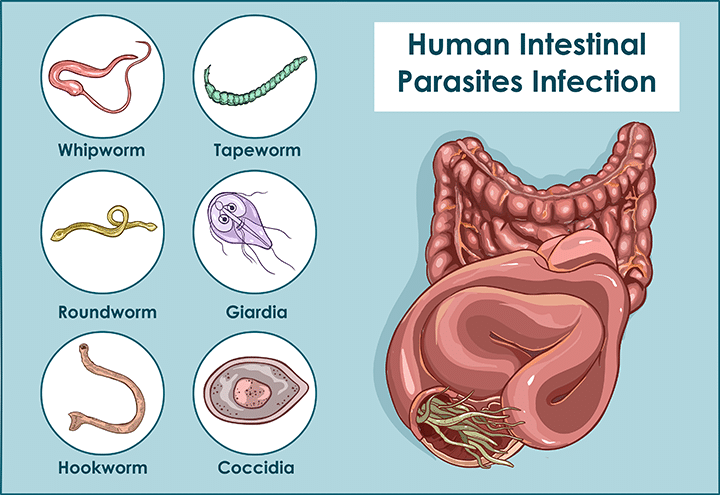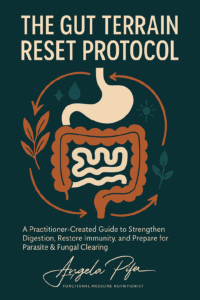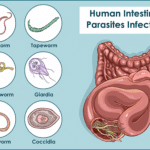Why Parasite Testing Often Misses the Mark — and What to Watch For Instead

If you’ve ever been told that your stool test “looks normal” — yet you’re still bloated, exhausted, foggy, and reactive — you’re not imagining things.
For many people with chronic gut symptoms, the problem isn’t that nothing’s wrong… it’s that we’re looking for answers in the wrong place.
In functional medicine, stool tests are often treated like a diagnostic gold standard. But when it comes to parasites, these tests often miss the real issue. In fact, some of the most persistent and complex gut cases I’ve worked with involved clients whose labs were “clean” — but whose bodies were clearly fighting something.
This article walks through why parasite testing can fail, how these organisms evade detection, and what to pay attention to when your labs say everything is fine — but you know something’s off.
The Illusion of a “Clean” Stool Test
Many of us assume a negative stool test means no infection. But stool testing — even PCR-based ones like GI-MAP — comes with serious blind spots.
Here’s why parasites are hard to catch on stool analysis:
- They aren’t always shedding: Parasites reproduce in cycles and may not release eggs or cysts in every bowel movement. If your sample is taken on a “quiet” day, they simply won’t show up.
- They’re embedded, not floating: Many parasites burrow into the intestinal mucosa or reside in tissue, especially in chronic infections. These organisms often don’t appear in stool samples at all.
- They hide in biofilm: Biofilm is a sticky, protective layer that helps microbes evade detection and resist treatment. Parasites (and fungi like Candida) often live in biofilm communities, where they’re protected from both the immune system and testing tools.
- They can be dormant: Some species become dormant when immune pressure is high or resources are low. This “quiet mode” helps them survive but also makes them less likely to be picked up in stool tests.
- False negatives are common: A 2014 study by Dr. Satish Rao found that 52% of patients with unexplained GI symptoms tested positive for fungal or parasitic overgrowth — even though prior standard stool tests had failed to detect anything [1].
That means over half of people with real gut dysfunction were misled by a “clean” lab report.
The Parasite Is a Movie — Testing Is a Snapshot
One analogy I often share with clients is this:
Testing is a snapshot. But parasites are a movie.
If you only take one frame — or one test — you miss the full story. You might catch them in the act. Or you might not.
That’s why I put more weight on pattern recognition, symptom cycles, terrain dysfunction, and exposure history than I do on any single lab.
If someone comes in with:
- Cyclical bloating, fatigue, itching, or rashes
- Symptoms that worsen around the full moon
- Sugar cravings or fogginess after meals
- Puffy, “toxic” feeling even with a clean diet
- A history of travel, pets, or mold exposure
…I’m already thinking about parasites. Even if their GI-MAP says otherwise.
A Real-World Example: When the Body Knows Before the Test
Let me share a quick case story. I worked with a client — we’ll call her Sasha — who had all the signs of a parasitic infection: severe sugar cravings, itchy skin, brain fog, and night sweats that flared every month.
She’d done two GI-MAPs and one ova-and-parasite exam with her GI specialist. All came back negative.
But she had three cats. She’d lived abroad for a year. She was reacting to almost every supplement. And she had visible inflammation markers on other tests. We used a terrain-first approach instead of chasing more testing. We supported bile flow, motility, mucosal repair, and nervous system regulation.
Six weeks in, she had a massive parasite release — clearly visible in the toilet. Her body had been holding onto these organisms until the environment shifted enough for it to let them go.
No test had caught them.
But her body knew.
Why “Prepping the Terrain” Isn’t Just a Buzzword
In parasite protocols — and really all gut work — the environment of the gut (aka your terrain) is everything. If bile isn’t flowing, motility is sluggish, or your immune tone is suppressed, even the best anti-parasitics won’t work.
And often, your body won’t even attempt to detox. It’s too overwhelmed to let go.
This is where so many protocols fail. They jump straight into “kill” mode without supporting:
- Stomach acid — low acid = more pathogens get through
- Bile — sluggish bile = reduced antimicrobial activity
- Mucosal immunity — damaged lining = easier attachment and persistence
- Lymphatic and drainage pathways — clogged = toxins and pathogens recirculate
- Nervous system safety — if the vagus nerve is shut down, the gut can’t eliminate efficiently
This is why I almost always recommend starting with terrain support — not just for healing, but for accuracy in testing. A resilient terrain makes it more likely that your immune system will expose the infection (and maybe even shed it into stool), which is when testing actually works better.
So What Should You Watch for Instead?
If testing can miss parasites, what can you trust?
Your body.
Look at patterns and symptoms that don’t match your test results — especially:
- Cyclical symptoms: Monthly flares in fatigue, mood, or skin rashes
- Unexplained food reactions: Especially sugar, gluten, or histamine-rich foods
- Full moon sensitivity: Trouble sleeping, itching, nightmares, or bloating
- Persistent GI symptoms despite “normal” tests
- Feeling worse after antimicrobials: This can be due to die-off or immune activation
These aren’t random. They’re your body’s way of showing that something deeper is at play.
What You Can Do (Even Without a Positive Test)
The good news? You don’t need a positive test to take action.
In fact, if you only take action when a test confirms your suspicion, you’ll stay stuck. That’s why I created two tools you can use right now:
- Take the Gut Terrain Quiz
This 2-minute quiz helps you assess how resilient (or depleted) your digestive terrain is. It’s not a diagnosis — but it gives you a clear sense of whether your body is ready for deeper parasite work.
- Download the Gut Terrain Reset Handout
This handout outlines the exact steps I use with clients to restore digestive strength before any detox or protocol. It’s not about restriction — it’s about rebuilding the foundation so your body can actually clear what’s inside.

Both are available now — no test required.
Conclusion: Trust Your Symptoms — Not Just the PDF
You don’t need to prove your symptoms on paper to start healing.
Parasite testing has a role — but it’s only one part of the picture. When testing says nothing is wrong, but your gut says otherwise, terrain becomes your next best guide. Focus on rebuilding. Pay attention to your symptom patterns. And give your body the support it needs to do what it’s built to do.
If you’re ready to take that step, grab the Gut Terrain Reset or book a 20-minute Introductory Consultation with me. Testing may fail — but your body rarely lies.
- Rao SSC, et al. Small intestinal fungal overgrowth (SIFO) in gastrointestinal disorders. Dig Dis Sci. 2014.
- Maizels RM. Parasite immunomodulation and polymorphisms of the immune system. J Biol. 2003.
- Wells JM, et al. Homeostasis of the gut barrier and potential biomarkers. Am J Physiol Gastrointest Liver Physiol. 2017.
Enjoying this content? Sign up for updates... It's FREE!

















